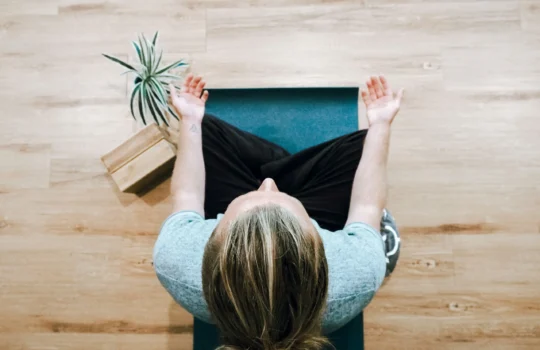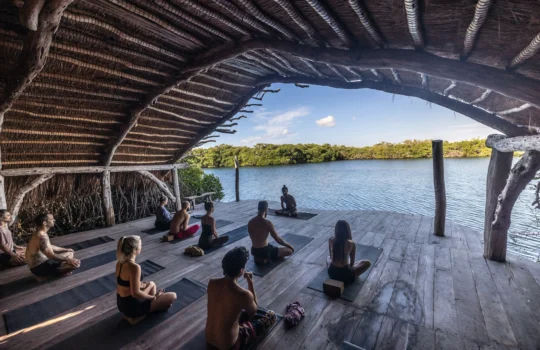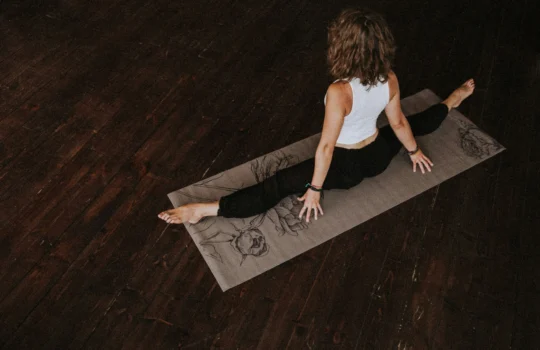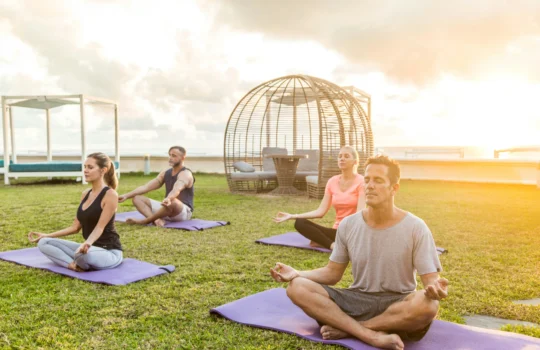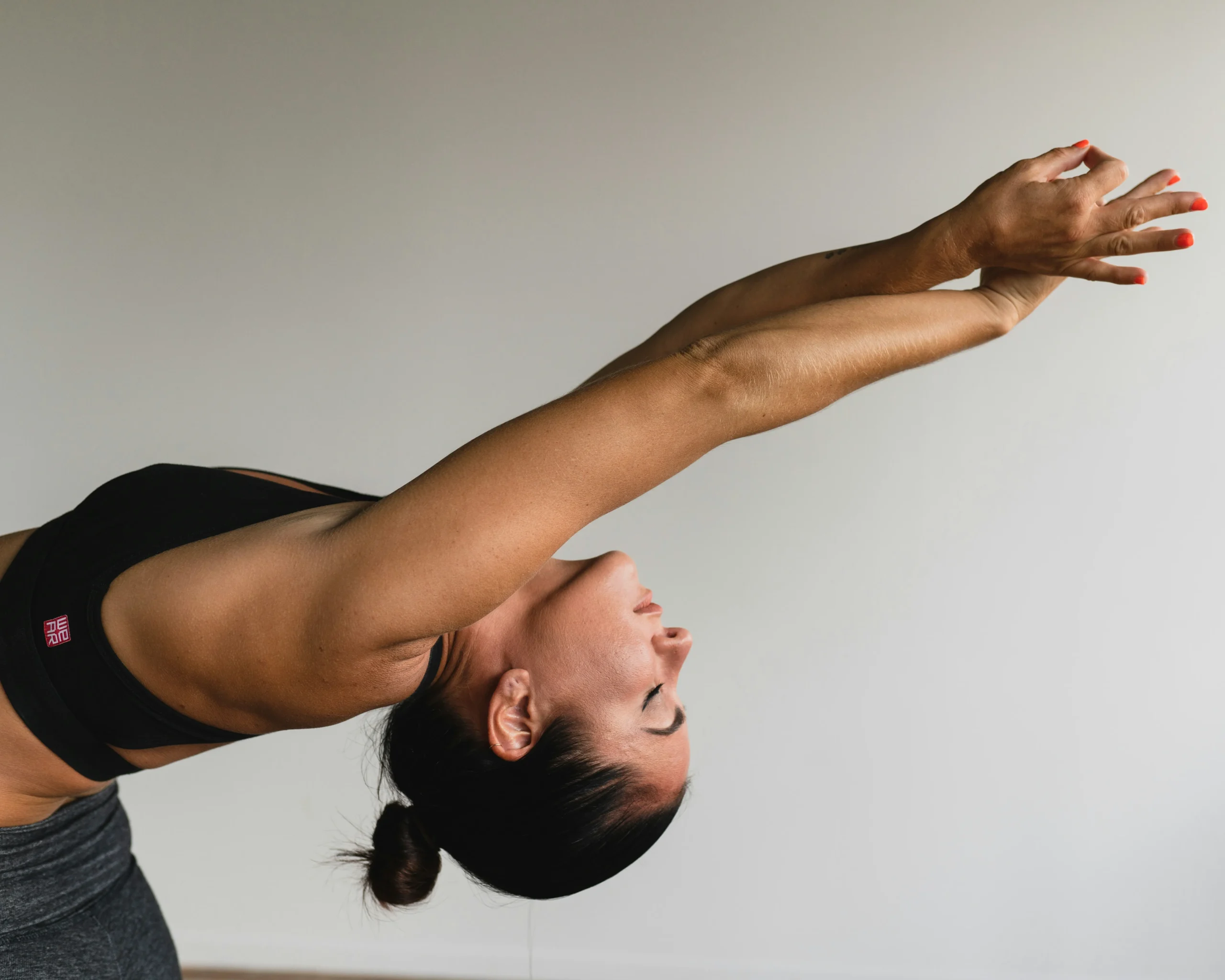Hey there, Yoga Warrior! Are you ready to sound like a yogi legend in your next class? Whether you’re a total newbie with dreams of achieving Zen or a seasoned pro looking to deepen your practice, mastering the language of yoga is key. Dive into this supercharged glossary packed with every essential yoga terms you need to know.
We’re not just talking poses here; we’re exploring the philosophy, the styles, and the subtle energies that make yoga a transformative experience. So, grab your water bottle, roll out your favorite mat, and prepare to immerse yourself in the rich vocabulary of yoga terms. Let’s get fluent in yoga-speak and totally revolutionize your practice by learning all fundamental yoga terms!
Table of Contents
Part 1: Foundations of Yoga – The Basics
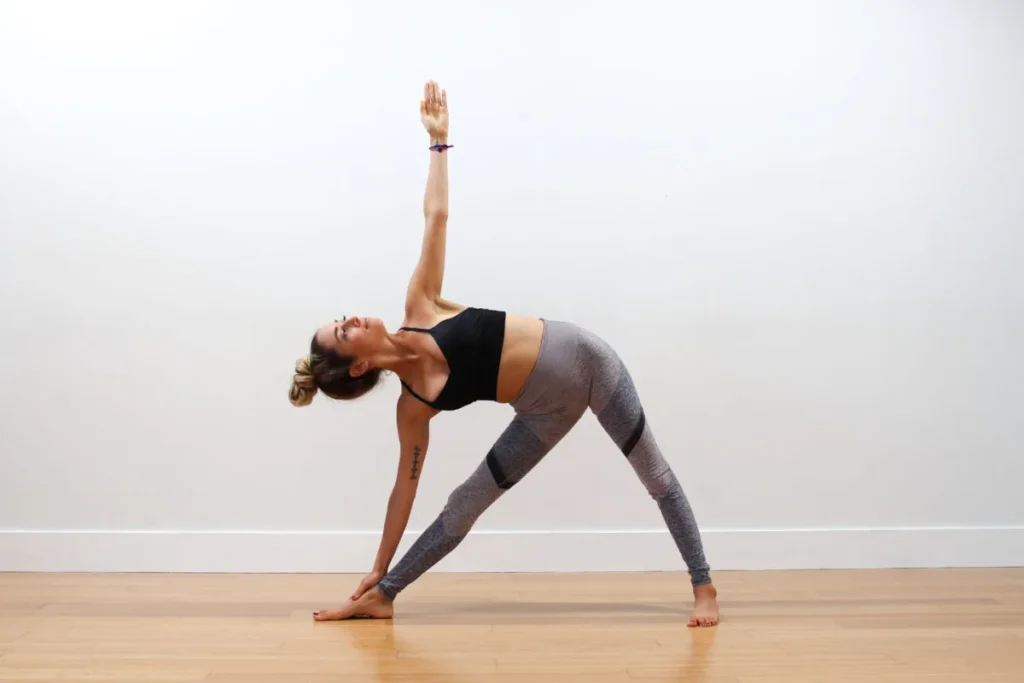
1. Asana – What Does It Really Mean?
So, your yoga instructor keeps saying “asana” and you nod along, but what’s the deal? Here’s the scoop: asana means “pose” or “posture.” Each asana is a specific position designed to improve strength, flexibility, and balance, while also enhancing mental focus. There are hundreds of asanas, from the empowering Warrior Pose to the soothing Child’s Pose. Each one offers unique benefits, so whether you’re stretching up into a Tree Pose or folding into a Forward Bend, you’re not just doing a workout – you’re sculpting a masterpiece of body and breath.
- Visit “What does Asana Meaning? 4 Revolutionary Impacts on Wellness and Spirituality!” for a more detailed and enlightening description of asana and its profound effects on our lives.
2. Pranayama – The Art of Breathing
Breathing is automatic, right? But in yoga, breath control, or pranayama, turns each breath into a powerful tool for mental and physical well-being. Techniques range from the energizing Kapalabhati to the relaxing Anulom Vilom. By learning pranayama, you can calm a stormy mind, boost your energy levels, or even cool down your body on a hot day. It’s like having a magic wand at the tip of your nose!
- Check out “What is Pranayama? The Ultimate Joy of Purifying Breath Technique for Beginners” for learning more about pranayama types and how impactful it is as a powerful tool for mental and physical well-being.
3. Meditation – Beyond Just Sitting Quietly
Forget any notion that meditation is just about sitting in silence. Yoga treats meditation as a dynamic tool to cultivate deep awareness and inner peace. Integrated with asana and pranayama, meditation in yoga helps to achieve clarity, emotional positivity, and a tranquil mind. It’s about reconnecting with your best self, discovering insights, and enjoying moments of profound peace and vibrant energy.
- Check out our Meditation category to dive deep into this powerful skill to learn more about how meditation can help emotional regulation, stress relief and help you become a better version of you.
Part 2: Types of Yoga – Know Your Styles
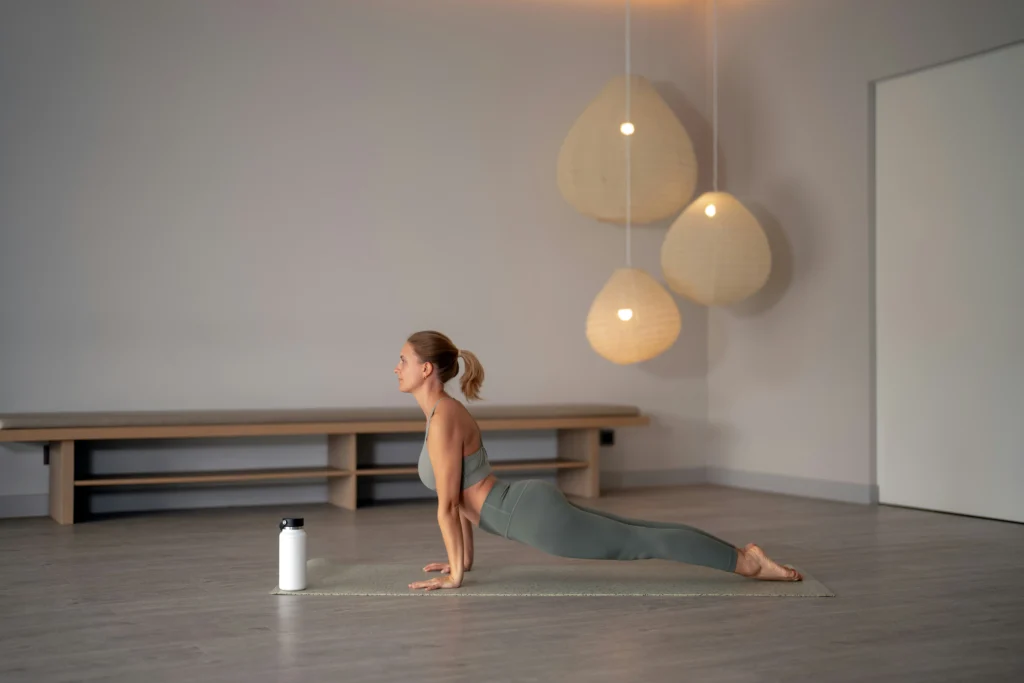
4. Hatha Yoga – The Path of Balance
Hatha Yoga is your golden ticket if you’re all about balance, grounding, and a gentle pace. This style focuses on physical postures and breath, which makes it perfect for beginners or anyone who wants a more meditative experience. Hatha classes are a great way to start the day with mindfulness or unwind after a hectic day. Each session helps you develop flexibility and resilience both on and off the mat.
- Who Might Like It: Hatha Yoga is ideal for those who appreciate a slower pace and more static posture focus, making it perfect for beginners, seniors, or anyone recovering from injury. It’s also a hit with those looking to reduce stress and increase mindfulness in their daily routines. If you enjoy thorough explanations and a chance to deeply understand each pose, Hatha could be your yoga haven.
5. Vinyasa Flow – Yoga in Motion
Imagine linking each breath with a graceful, dance-like sequence of movements. That’s Vinyasa Flow for you! This dynamic style of yoga keeps you moving from one pose to another, creating heat and harmony as you go. It’s perfect for those who find peace in motion and enjoy a cardiovascular workout that is also meditative and fluid. Plus, it’s a fantastic way to express creativity through movement in each class.
- Who Might Like It: Vinyasa Flow is the go-to for fitness enthusiasts who love to break a sweat and those who thrive on continuous movement. It appeals particularly to people who get bored with repetitive workouts and crave variety in their exercise routine. If you’re a dancer or a creative soul who loves to synchronize movement with breath, Vinyasa will likely speak to your spirit.
6. Kundalini Yoga – The Yoga of Awareness
For the spiritual adventurers, Kundalini Yoga offers an in-depth exploration of psychic energy centers in the body, known as chakras. This practice includes chanting, singing, repetitive poses, and dynamic breathing techniques, all designed to awaken the serpent power (Kundalini) at the base of your spine. Kundalini Yoga is intense and transformative, aiming to elevate your spiritual consciousness and connect you with a higher self.
- Who Might Like It: Kundalini Yoga is suited for those who are not only interested in physical fitness but also in spiritual growth. It attracts individuals seeking more profound emotional release and spiritual enlightenment. If you’re curious about the metaphysical aspects of yoga and enjoy practices that include meditation, mantras, and energy work, Kundalini Yoga could be the transformative journey you’re looking for.
7. Yin Yoga – Slow yet Steady
Yin Yoga is indeed a type of yoga that focuses on passive stretching and maintaining poses for longer periods of time, typically from 45 seconds to two minutes or even longer. Unlike more dynamic styles like Vinyasa or Ashtanga, Yin Yoga targets the deep connective tissues of the body (such as the fascia and ligaments) rather than the muscles, which can help improve flexibility and increase circulation in the joints. It also encourages a meditative approach to practice, fostering a deep sense of calm and balance.
- Who Might Like It: Yin Yoga is particularly beneficial for those who want to unwind and relax, making it ideal for those under stress or anyone looking to slow down their fast-paced life. It’s also a good complement to more active styles of yoga and other forms of physical activity that focus on muscular strength and stamina, as Yin provides a balance to such practices by focusing on flexibility and relaxation.
8. Ashtanga Yoga – Precision and Progress
Ashtanga Yoga is a structured vinyasa-style class where movements are precisely tied to breath. It consists of six series of specifically sequenced yoga poses. Each sequence is practiced and mastered before moving on to the next. This style is physically demanding and is done without music, focusing instead on the rhythm of the breath to build heat and energy. Ashtanga’s systematic approach helps build strength, flexibility, and mental focus.
- Who Might Like It: Ashtanga is perfect for those who appreciate routine and discipline. If you’re someone who enjoys a challenge and thrives on structure, Ashtanga Yoga offers a powerful, transformative practice. It’s ideal for those who are detail-oriented and those looking to deepen their physical practice through repetitive training.
9. Iyengar Yoga – Alignment and Awareness
Iyengar Yoga is known for its emphasis on precision and alignment in every pose. This method often uses props like yoga blocks, belts, and bolsters to perform poses accurately, minimizing the risk of injury or strain and making the poses accessible to people at all levels of ability. The pace is slower, allowing for deep focus and a thorough understanding of each posture.
- Who Might Like It: Iyengar is a hit with those who need to improve their alignment, recover from injury, or who simply want to deepen their practice by focusing on the subtleties of each posture. It’s also great for beginners who are learning the correct techniques in yoga from the start.
10. Bikram Yoga – Heat and Harmony
Bikram Yoga consists of a series of 26 poses and two breathing exercises practiced in a heated room. This repetition and the sauna-like conditions are designed to increase muscle flexibility, detoxify the body, and increase mental concentration. Each class follows the same sequence, allowing practitioners to gauge their progress over time.
- Who Might Like It: If you love to sweat and enjoy structured workouts, Bikram might be your match. It’s suited for those who want a rigorous, predictable workout they can learn to master. Also, those dealing with injury find that the heat helps loosen muscles and alleviate pain.
11. Restorative Yoga – Gentle and Healing
Restorative Yoga focuses on relaxation, healing, and the soothing of the nerves. This gentle practice involves very little movement and supports the body using props to hold poses for an extended period, allowing the muscles to relax deeply. It’s a rejuvenative practice often used to de-stress and recover from illness or injury.
- Who Might Like It: This type is ideal for those looking to unwind or recover from stress and overstimulation. If you’re someone who needs to slow down or someone dealing with chronic stress or fatigue, Restorative Yoga can be a wonderful resource.
12. Power Yoga – Strength and Stamina
Power Yoga is a vigorous, fitness-based approach to yoga aimed at strengthening the body. This style keeps you moving rapidly from one pose to the next, adding a cardiovascular component that most traditional styles do not offer. It is heavily influenced by Ashtanga but does not adhere to a set series of poses, so classes can vary widely.
- Who Might Like It: Power Yoga is loved by those who are looking for a tough workout and want to improve strength and flexibility. If you enjoy high-intensity workouts that involve a lot of sweating and you appreciate having variety in your fitness routine, Power Yoga could be an excellent fit.
For further yoga types and how to practice them, you can visit Mind Body Green.
Part 3: Dive Deeper – Advanced Yoga Terms

7. Bandha – The Yoga Locks
When you finished your beginner-friendly yoga terms, now it’s time for advanced yoga terms. Ever felt like you need to unlock new levels of energy in your yoga practice? Meet the Bandhas—powerful yet subtle “locks” that you can engage to control and direct energy within your body. There are three main Bandhas: Mula Bandha (the root lock), Uddiyana Bandha (the abdominal lock), and Jalandhara Bandha (the throat lock). When activated, these locks help increase muscular strength, stabilize the core, and enhance respiratory functions. Mastering the Bandhas could be your secret weapon for deeper meditation and a more powerful yoga practice.
8. Drishti – The Gaze That Guides
Drishti is a focused gaze used during a yoga pose to enhance concentration, balance, and alignment. Each pose typically has a specific point where you should direct your gaze—for instance, looking upwards in Warrior I or at your toes in Forward Bend. This practice helps to block out distractions, allowing you to fully immerse in the present moment and stabilize both your mind and body. It’s not just about seeing; it’s about truly looking within.
9. Nadi – The Channels of Energy
In yoga terms, Nadis are the pathways through which prana, or life force energy, flows. There are thousands of Nadis in the body, but the three primary ones are Sushumna, Ida, and Pingala. Understanding and working with these energy channels through practices like pranayama, meditation, and certain asanas can help clear blockages and harmonize energy flow, leading to improved vitality and well-being. This concept is crucial for anyone looking to deepen their understanding of the energetics of yoga practices.
Part 4: Yoga Equipment and Accessories
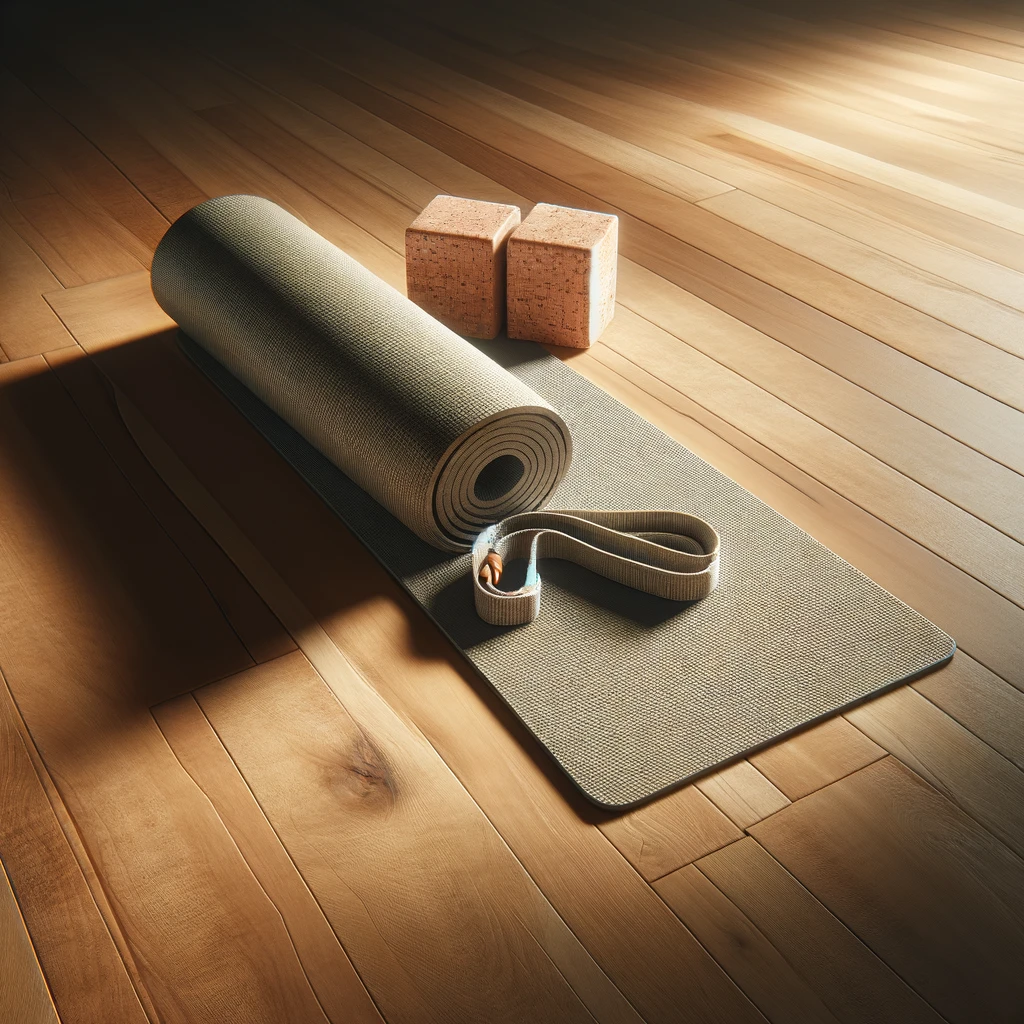
10. Yoga Mats – More Than Just a Sticky Surface
The yoga mat: it’s every yogi’s best friend! But not all mats are created equal. Depending on your practice style, you might want a thicker mat for cushioning in restorative classes or a grippy, non-slip surface for sweaty Vinyasa sessions. Mats also come in various materials, from eco-friendly options like natural rubber to more traditional PVC. Choosing the right mat isn’t just about comfort; it’s about creating a sacred space for your practice.
11. Props – Boosting Your Yoga Practice
Props aren’t just for beginners—they’re fantastic tools to deepen your practice and explore poses safely and effectively. Blocks can help stabilize your balance, straps can extend your reach, and bolsters can support your body during deep stretches or relaxation. Using props can also make yoga more accessible if you have physical limitations or are recovering from injuries. Whether you’re a newbie or a seasoned pro, integrating props can add a whole new dimension to your yoga journey.
12. Yoga Clothing – Dressing for Success
What you wear can make a big difference in how you move and feel in your yoga class. Look for clothing that is comfortable, breathable, and flexible. You want to be able to move freely without constantly adjusting your outfit. Moisture-wicking materials are also a plus, especially for more intense sessions. Remember, yoga is not just a practice but an experience, and wearing the right gear helps you enjoy it fully.
13. Yoga Wheels – Rolling Towards Flexibility and Strength
Yoga wheels are a newer accessory that yogis have embraced for their versatility and support. These sturdy wheels can help you deepen stretches, challenge your balance, and open up your back, hips, and chest. They are particularly helpful for beginners who are working on their flexibility, but even advanced practitioners can use them to explore new variations of poses.
Learn more about what kind of yoga gears you need to boost your yoga performance and enjoy more of your practice. Visit Shop category and find the perfect deals with great performance tools at the same time!
Part 5: Yoga Philosophy and Texts
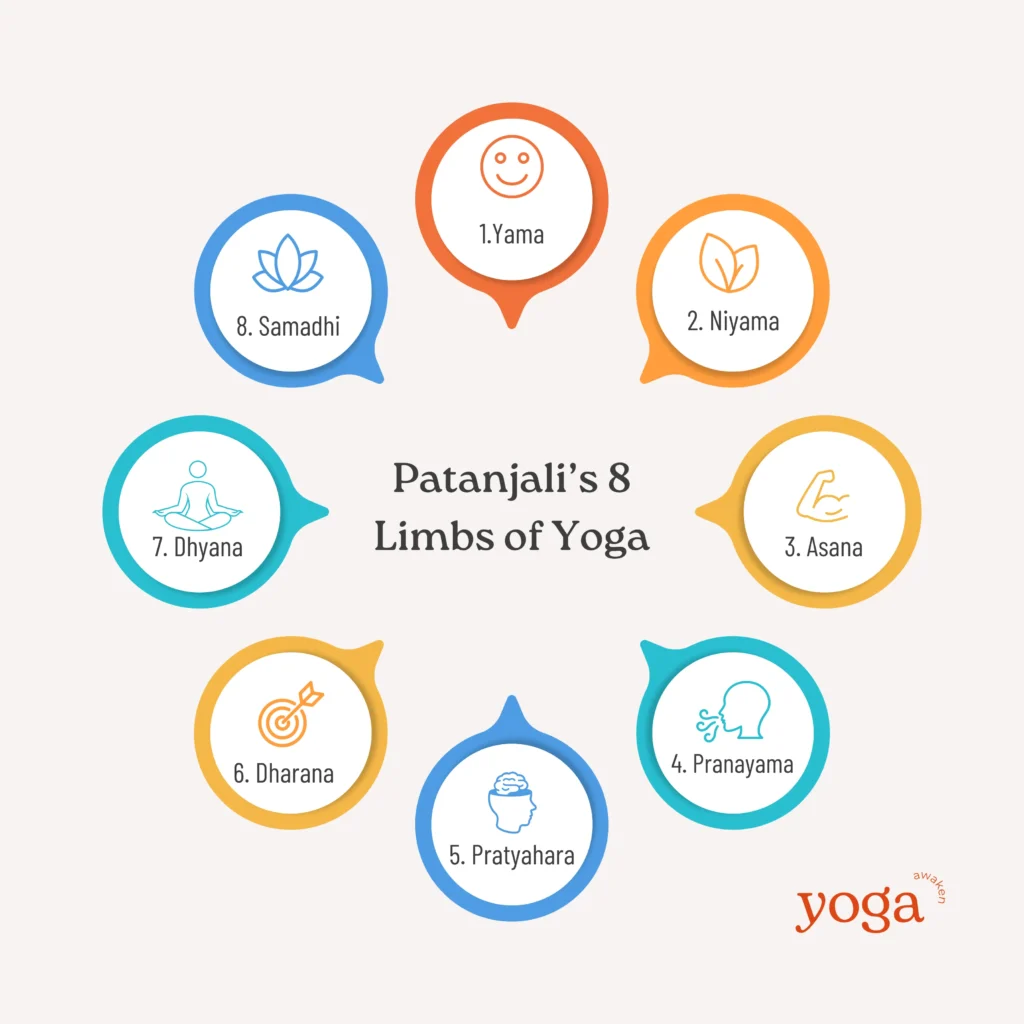
14. The Yoga Sutras – Patanjali’s Teachings
Dive into the heart of yoga philosophy with the Yoga Sutras of Patanjali, one of the most foundational texts in yoga literature. This collection of 196 aphorisms outlines the path of Ashtanga, or the eight-limbed path, which includes guidelines like the Yamas (ethical standards) and Niyamas (self-discipline), all the way to Samadhi (liberation or enlightenment). Understanding these teachings can profoundly deepen your practice and offer insights not just into physical postures but into living a more fulfilled and mindful life.
15. Bhagavad Gita – Yoga Beyond the Mat
The Bhagavad Gita, a 700-verse Hindu scripture that is part of the Indian epic Mahabharata, addresses the moral and philosophical dilemmas faced by the warrior Arjuna on the battlefield. The text is a conversation between Prince Arjuna and the god Krishna, who serves as his charioteer. It introduces the concepts of Dharma (duty/righteousness) and Yoga as a way of life, emphasizing that yoga is not just physical exercise but a mental and spiritual practice that extends beyond the mat into every part of your life.
16. Upanishads – Exploring Inner Self
The Upanishads are ancient texts that are fundamental to the philosophical underpinnings of yoga. They explore the nature of reality, the self, and the universe, offering profound insights into how one can achieve union with the cosmic spirit through meditation and self-awareness. The ideas found in the Upanishads provide a deeper understanding of the energies that yoga practices aim to harness and balance.
17. Modern Interpretations and Teachings
Modern yoga has seen interpretations and teachings that adapt ancient wisdom to contemporary needs. Influential teachers like B.K.S. Iyengar, T.K.V. Desikachar, and Pattabhi Jois have each developed their styles and philosophies based on traditional texts, emphasizing different aspects of practice that appeal to modern practitioners around the world.
Part 6: How to Apply Yoga Terms in Everyday Practice?

18. Yoga Terms in Daily Communication
Imagine using Ahimsa (non-violence) in how you talk to yourself and others or Satya (truthfulness) in your daily communications. Integrating yoga philosophy into your speech can transform your interactions and lead to more genuine and respectful relationships.
19. Asana in Daily Life
You don’t need a mat to practice asana! Simple postures like the Mountain Pose can be integrated while standing in line or at work, helping you maintain posture and awareness throughout the day. Incorporating physical yoga into everyday life helps maintain flexibility and strength, even outside of formal practice sessions.
20. Mindfulness and Meditation Everywhere
Meditation doesn’t have to be confined to a quiet, secluded room. You can practice mindfulness and breathing techniques while commuting, eating, or even during meetings. These practices can help reduce stress, increase focus, and keep you grounded in the present moment.
21. Pranayama for Stress Management
Simple breathing exercises like Nadi Shodhana (alternate nostril breathing) can be a quick way to de-stress in any setting. Whether you’re feeling overwhelmed at work or anxious at home, a few minutes of pranayama can rebalance your nervous system and calm your mind.
22. Living the Yamas and Niyamas
Applying the ethical precepts and personal observances from yoga in daily life, such as Santosha (contentment) and Tapas (self-discipline), can lead to a more harmonious and purposeful existence. These principles encourage a lifestyle that not only benefits personal well-being but also improves the communities around us.
Conclusion of All Yoga Terms
Congratulations on embarking on this enlightening journey through the expansive world of yoga terms! By now, you’ve explored not only the foundational postures and breathwork techniques but also dived deep into the profound philosophies and texts that enrich the practice of yoga. Understanding these yoga terms doesn’t just enhance your physical practice; it deepens your spiritual connection and enriches your everyday life. Whether you’re applying the Yamas in your daily interactions, using Pranayama to find calm during a hectic day, or exploring meditation to gain clarity, the language of yoga is a powerful tool for transformation and growth.
Share Your Thoughts!
Now it’s your turn to bring these yoga terms to life! Which of these yoga practices or philosophies resonated most with you? Have you discovered new ways to integrate yoga into your daily routine or perhaps felt inspired to deepen your study of yoga texts? Share your thoughts and experiences in the comments below! We love hearing how our readers incorporate these ancient wisdoms into modern life. And if you found this guide helpful, don’t forget to share it with your fellow yogis and friends on social media. Spread the love, spread the light, and keep flowing on your yoga journey!


